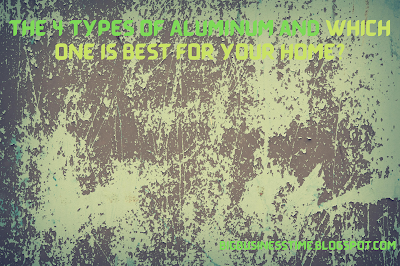Aluminum is a lightweight, low-density, weatherable metal that is extremely durable and corrosion-resistant. It is also relatively inexpensive when compared to other building materials. The vast majority of residential construction uses non-corrosive aluminum because it is easy to work with and inexpensive. The most common aluminum alloys used in roofing, siding, and framing are alloys 6063 and 5052. Aluminum is great for residential construction because it is lightweight, corrosion-resistant, can be formed easily and is inexpensive. Aluminum has a better strength-to-weight ratio than steel, which reduces the number of materials required to build a home. This can reduce a home’s cost and make it more energy-efficient. Some of the main benefits of using aluminum in residential construction are: - Lightweight - aluminum weighs about one-third as much as steel. - Corrosion-resistant - aluminum has a high natural resistance to corrosion and does not oxidize, which means the material does not interact with oxygen to produce corrosion. - Easy to work with - aluminum is easy to cut, weld, and machine. - Inexpensive - aluminum costs less per pound than almost every other construction material.
4 Types of Aluminum and Which One Is Best for Your Home?
Rolled Aluminum
Rolled aluminum is the most basic type of aluminum that can be used for construction. It is commonly used for flashing and roofing. Rolled aluminum is the most basic type of aluminum used in construction. It is commonly used for flashing and roofing. - Flashing - flashing is a piece of material that is placed on the walls or roofs of a home to direct water away from the house. It is commonly used around the windows, doors, eaves, and roof lines. When used as roofing, it is often painted black to enhance the heat resistance of a roof. - Siding - walls are a major factor in determining a home’s energy usage, but they are often overlooked. Siding is the covering that protects the walls of a home and has numerous aesthetic and energy-saving benefits.
Aluminum Reinforced Concrete (ARC)
ARC is aluminum concrete. It is made from concrete with an aluminum wire or foil that is embedded in the concrete. Aluminum concrete is made from concrete with an aluminum wire or foil that is embedded in the concrete. This is a relatively new and popular material used in residential construction. - Advantages - ARC has a high resistance to fire, great thermal properties, and a long lifespan. It is also lightweight, rust-free, and doesn’t crack like concrete. - Disadvantages - ARC does not have the same strength as concrete and does not have great resistance to corrosion. The biggest drawback is that it is more expensive than concrete.
Aluminum Coated Reinforcing Steel (ACRS)
ACRS is steel with an aluminum coating. It is used in beams and columns, and the coating is applied to protect the steel from corrosion. ACRS is steel that has an aluminum coating. It is used in beams and columns, and the coating is applied to protect the steel from corrosion. ACRS is used in places where the strength of concrete or brick is needed, but the aesthetics of steel are desirable. - Advantages - ACRS is lightweight and strong, which makes it great for columns. The aluminum coating is corrosion-resistant, so it is perfect for steel beams. - Disadvantages - ACRS is less durable than concrete and bricks. It is also more expensive than concrete, but less expensive than brick.
Aluminum Curtain Wall
An aluminum curtain wall is a building exterior that is made up of aluminum panels. An aluminum curtain wall is a building exterior that is made up of aluminum panels. It is often used in commercial buildings like hotels, office buildings, and airports. It is also used on high-end residential buildings. - Advantages - curtain walls are aesthetically pleasing, lightweight, and energy-efficient. They can also be designed to control sun and rain, as well as provide additional insulation for a building. - Disadvantages - curtain walls are more expensive than other building exteriors and are dependent on weather conditions. They can be adversely affected by high winds, high water, and extreme temperatures.
Conclusion
Aluminum is an excellent material for residential construction, and the four types discussed in this article are excellent examples of its uses. It is lightweight, corrosion-resistant, and easy to work with, and it can be used in almost any application. Whether you use rolled aluminum, ACRS, ARC, or an aluminum curtain wall, aluminum has a place in your home and will provide you with great benefits.




